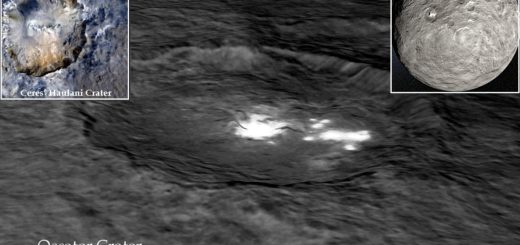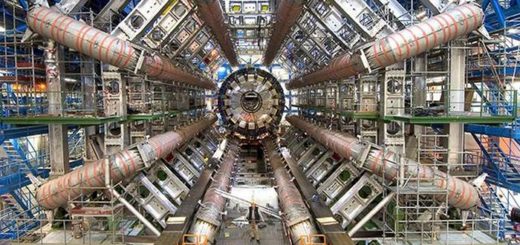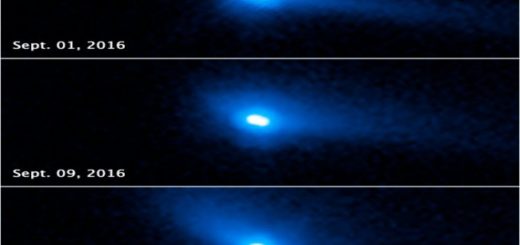Finally! CIA Releases ‘X-Files’ Docs, Details ‘How To Investigate’ UFOs

An odd thing happened this past week involving the real CIA, some fictional FBI agents and the oft-disputed truth about this country’s investigation into UFOs.
Just three days prior to the long-awaited return of “The X-Files,” the Central Intelligence Agency posted two rather extraordinary items on its official site.
Under the agency’s News & Information page, an article titled “Take A Peek Into Our ‘X-Files'” appeared. According to the description, hundreds of formerly secret documents were declassified in 1978, “detailing the agency’s investigations into Unidentified Flying Objects (UFOs). The documents date primarily from the late 1940s and 1950s.”
By latching on to the saga of Special Agents Mulder and Scully, the CIA is using the fictional FBI series in an unlikely bid for public goodwill, especially from the UFO community, a group that almost automatically accuses the government of conspiring to cover-up the truth.
As the CIA says on its site:
To help navigate the vast amount of data contained in our FOIA [Freedom of Information Act] UFO collection, we’ve decided to highlight a few documents both skeptics and believers will find interesting. … You will find five documents we think ‘X-Files’ character Agent Mulder would love to use to try and persuade others of the existence of extraterrestrial activity. We also pulled five documents we think his skeptical partner, Agent Dana Scully, could use to prove there is a scientific explanation for UFO sightings. The truth is out there; click on the links to find it.
Readers can then pore through a collection of documents running the gamut between flying saucer reports, official memos and advisory panel reports from the 1950s.
As if that weren’t enough, the CIA ends the page with “Do you want to believe? Then find out how to investigate a flying saucer.” Off you go to the next lengthy treatment that begins with a re-telling of a famous 1964 UFO close encounter, in which a New Mexico police officer reports seeing a football-shaped craft on the ground.
In the report description, the CIA describes the account of officer Lonnie Zamora outside of Socorro, New Mexico. The CIA quotes Air Force Maj. Hector Quintanilla — the last chief officer of Project Blue Book, the Air Force’s long-term UFO investigation — who was in charge of the Socorro case. According to the new CIA X-File, Quintanilla said this was “the best documented case on record.” The CIA adds that the Zamora incident “remains unsolved.”
The introduction to the document doesn’t mention the most extraordinary part of the sighting: According to the initial report, “two persons in apparent white coveralls” appeared near the strange flying object and eventually disappeared, presumably entering the object before it rose up and sped away. See an image of the original FBI teletype below.
In addition to the Socorro report, the CIA posts the following instructions:
10 Tips When Investigating A Flying Saucer: 1. Establish a Group To Investigate and Evaluate Sightings 2. Determine the Objectives of Your Investigation 3. Consult With Experts 4. Create a Reporting System To Organize Incoming Cases 5. Eliminate False Positives 6. Develop Methodology To Identify Common Aircraft and Other Aerial Phenomena Often Mistaken for UFOs 7. Examine Witness Documentation 8. Conduct Controlled Experiments 9. Gather and Test Physical and Forensic Evidence 10. Discourage False Reporting
In item #5 (above), the CIA cites a 1998 report that suggests how “some common explanations for UFO sightings…included misidentified aircrafts (the U-2, A-12 and SR-71 flights accounted for more than half of all UFO reports from the late 1950s and most of the 1960s).”
It’s not that we’re nit-picking the fact that the CIA referred (above) to more than one aircraft as “aircrafts” — but UFO researchers are questioning the accuracy of that 1998 assessment about UFO sightings mistaken for U-2 flights.
Bruce Maccabee, a retired Navy optical physicist, and UFO researcher, is one who questions the U-2’s role in the frequency of UFO sightings.
“Their claim is straightforward, that, once the U-2 started flying, more than 50 percent of UFO sightings were actually of the high-flying U-2 (spy aircraft). But if you look at the actual statistics, the number of sightings reported per month, for three years before and after, you find there’s no big increase as a result of the U-2 flights,” Maccabee, author of “The FBI-CIA-UFO Connection,” told The Huffington Post.
“Oddly enough, according to the official government’s Condon report statistics, there were 430 [UFO] sightings in 10 months before the U-2 started flying, and 430 during the 10 months after. That astonished me as much as anybody else. To claim that more than 50 percent of sightings [were reported] after the U-2 started flying, is a complete canard.”
The Condon report that Maccabee refers to was the University of Colorado UFO Project, funded by the Air Force in the late 1960s to evaluate UFOs. The director of the study, physicist Edward Condon, concluded that there was nothing of scientific interest to warrant any further examination of UFOs.
The following video shows several top secret aircraft that may have been mistaken for UFOs:
During a four-decade Naval career, Maccabee, pictured below, worked on control systems as part of the Strategic Defense Initiative and Ballistic Missile Defense, using high power lasers.
“My work for the Navy had nothing to do with UFOs. I wasn’t employed by the CIA or the FBI, and all of my UFO case analyses were carried out on my own time. Everything I did regarding UFO investigations, analyses, historical research, etc. was unclassified,” Maccabee said.
Maccabee maintains that none of his Navy superiors ever suggested he tone down his UFO research. “They said they didn’t care what I did in my spare time, ‘but just leave the Navy lab out of it.’ From that point on, Maccabee relied on his skills in optical data processing when he was asked to analyze the visual components of UFO cases.
“There are things I did that a few other people could have done, I suppose, because of the required knowledge. Aside from having an ability to interview people — listening to what they say and deduce stuff from it — I had to be both a historian and a physicist.”



 Creators of mankind
Creators of mankind Description of “Tall white aliens”
Description of “Tall white aliens” Where they came from?
Where they came from? About hostile civilizations
About hostile civilizations The war for the Earth
The war for the Earth “Tall white aliens” about eternal life
“Tall white aliens” about eternal life Video: “Nordic aliens”
Video: “Nordic aliens” Aliens
Aliens Alien encounters
Alien encounters The aliens base
The aliens base UFO
UFO Technology UFO
Technology UFO Underground civilization
Underground civilization Ancient alien artifacts
Ancient alien artifacts Military and UFO
Military and UFO Mysteries and hypotheses
Mysteries and hypotheses Scientific facts
Scientific facts


















